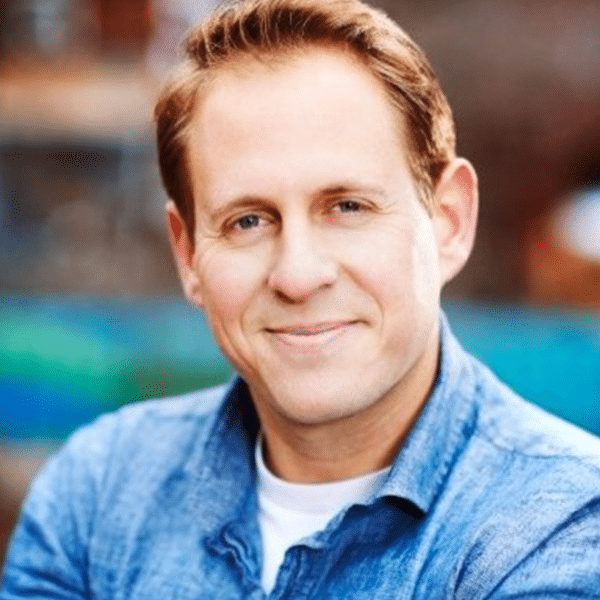Andrew Butcher, President, Maine Connectivity Authority, isn’t hyper-focused on BEAD and the $272 million that Maine will be receiving.
“Unfortunately, I think it’s a common misnomer that, once you deploy BEAD, the problem is solved,” Butcher told Telecompetitor in a recent interview. “While BEAD is an incredibly important ingredient to address connectivity, we are working hard to make sure that we don’t simply count on BEAD and BEAD alone.
“We are setting our sights on comprehensive connectivity grounded with a commitment to digital equity and inclusion. Our charge is to not leave anyone in the digital dark — AND ensure we maximize the long-term impact of our funding and partnerships.”
Butcher heads up the Maine Connectivity Authority (MCA), which he identifies as one of the only state broadband offices not under another administrative apparatus. The MCA is integrated into the state as a “quasi-governmental agency,” but is structurally independent.
He explained that, in 2021, the state took learnings from Connect Maine (the previous iteration of the state office) and proposed a more robust, proactive, quasi-governmental standalone agency. The MCA was founded and structured largely based on lessons from Maine’s successful 2020 state bond campaign and 2021 bid for $28 million from NTIA’s Broadband Infrastructure Program to support six community-driven, regional-scale, public-private partnerships.
Building from Connect Maine’s investments in community planning, Butcher said that the MCA hit the ground running, “putting American Recovery funds ($129 million of Capital Projects Fund money combined with $21 million of state and local fiscal recovery funds) to work right away.” This included integrating Connect Maine’s existing planning and infrastructure grants from the NTIA’s 2020 Broadband Infrastructure Program and its six projects and partners.
Today, the MCA has 23 employees throughout the state. It actively manages a grant portfolio of more than 65 projects that incorporate funding from seven different sources. While MCA is a large office and Maine is a small state, Butcher describes it as embodying “the Maine Way” of being resourceful while stretching every dollar as far as possible.
“We are being charged with implementing the defining public infrastructure investment of our time. How could we afford anything less than putting in place the best team possible to meet the moment? And that is what we have done. Our team is incredible. They care so much for what they’re doing, while bringing a diverse array of skill sets and perspective to the work.”
All In to Get all Online through Capital Projects Funds (CPF)
When the MCA was established, Butcher said the first order of business was to receive and deploy $128.2 million in Capital Projects Fund (CPF) money.
He noted that the office had to get CPF funds a diverse set of investments including line extensions. Funding also went toward “community-informed, regional-scale, public-private partnerships, middle-mile partnerships, and place-based multi-use community facilities,” he said.
The first wave was deployed in May 2022, which Butcher said facilitated connections for 80K unserved locations using a combined $140 million of CPF and state funds along with $80 million in matching dollars from private investment. “The rapidly scaling portfolio of grants required us to develop a best-in-class grant administration capacity in under six months.”
Butcher reports that every time there’s a grant round, including with CPF, they receive at least double the amount in asks that there is available. This reflects the healthy level of community readiness and demand for access.
A Catchy Acronym
Last year Maine won a $30 million grant from the NTIA’s competitive middle-mile program to build a 530-mile dark fiber, open access network. This is currently under construction in partnership with Maine’s Department of Transportation, as well as the University of Maine.
It’s great news and a much-needed resource for Maine’s citizens. But in an industry so full of acronyms, our favorite part of the story is that the network is called the Maine Open Optical Statewide Enabling Network, or MOOSE Net. It’s currently in the environmental assessment phase of construction. And it’s aptly named, as the new fiber routes are shaped like moose antlers facilitating multiple interconnection points, reaching into Canada.
The Need for BEAD, but Digital Equity First
Our discussion turned to the BEAD process, which currently finds Maine in the same place as other states — smack in the middle of the challenge process (begun in late April). Since we spoke with Butcher, Volume Two was approved.
Maine’s Digital Equity Plan was the first to be approved by the NTIA, largely because the state is putting digital equity at the forefront of its BEAD plan. Butcher explained, “We embarked on BEAD and digital equity planning in tandem. We want digital equity to inform BEAD and be counted in subgrantee scoring. Most states went in reverse.”
Butcher believes in his core that digital equity is the key to a successful BEAD program, not merely the byproduct of one. “We’re factoring digital equity impact criteria as an overlay/big component to our BEAD service areas as well as our awards/scoring system,” he said.
“BEAD funding is complicated and is going to take time to get to people,” said Butcher. “All the more reason we need to make the most of all other funding and partnerships to support and sustain the demand for access and affordability. Right now, one of our big challenges is to manage demand.”
Butcher insists that the BEAD applicant process will be true to who the MCA is: data-driven, community-informed, and partnership-friendly. The online GIS platform for analysis of BEAD applicants is called the Connectivity Hub for Analysis, Research, and Transparency (CHART), another worthy acronym.
During the subgrantee selection process, Maine’s “Connect the Ready” program reviews whether an applicant/ISP has a demonstrated level of engagement and partnership at the local levels where they wish to serve.
Butcher anticipates that some locations in Maine will require the alternative technologies of satellite or wireless to reach statewide universal service. BEAD subgrantee selection should start this winter, with funds going out in 2025 as Maine’s final funding request is approved.
Don’t Forget the Munis and Tribes
In all, the MCA is just shy of the 80K locations needed to reach “universal access”—36K unserved and 40K underserved. Ninety percent of the population is rural, and the state has the highest concentration of both rural and older citizens in the country.
Butcher said that the MCA’s “obligation is to help ensure a diverse ecosystem of competitive services for connectivity for the long term.”
In other words, Maine continues to encourage municipalities, broadband utility districts, and tribes to participate in the BEAD subgrantee process. However, Butcher acknowledges that the BEAD requirements for the match, guarantees, and overall compliance may be a barrier for smaller service providers. “It is for that reason we are exploring a menu of alternative financing, technical assistance, and shared services to maximize the pool of competitive BEAD applicants.”
“Our governor says that, in 2024, we cannot afford for people to be in the ‘digital dark,’ and BEAD is an important part of ensuring access at a scale only previously dreamt of,” said Butcher. “BEAD is a great set of resources, but it needs to be regarded as one part of a comprehensive connectivity solution for Maine — and certainly not the end of our efforts to invest in infrastructure to enable the full potential of a digital society that benefits everyone.
A Buffalo in Moose Country
Originally from Colorado, with a post-graduate and social enterprise entrepreneurial stint in Pittsburgh, Maine is now home for Butcher and his family (including 9- and 11-year-old children). “Someday, my kids might appreciate what I am doing, but right now I’m just the weird dad who points out pole attachments.”
“This position, it’s perfect for who I am — a creative problem solver who loves to be a part of a kick-ass team,” said Butcher.
“Only in my wildest dreams would I be able to contribute to the composition of this amazing place for decades to come. That’s a really unique opportunity that most people don’t get — ever.”



